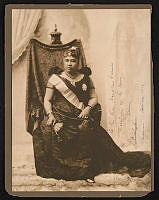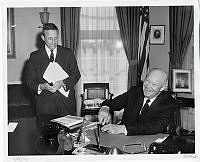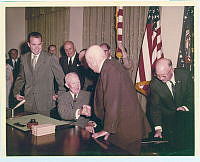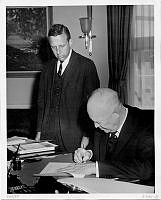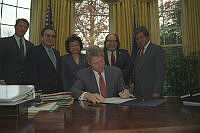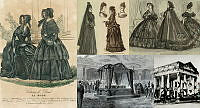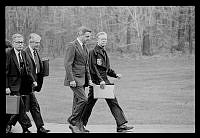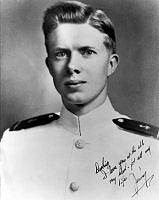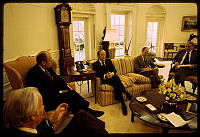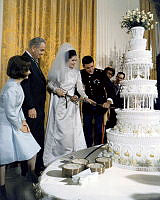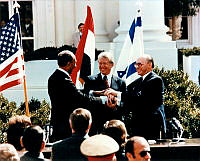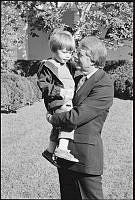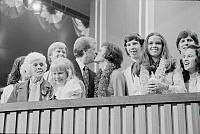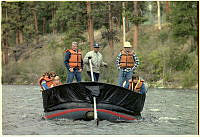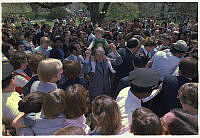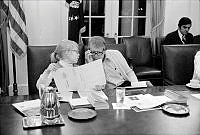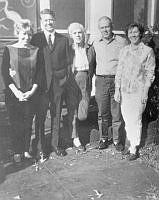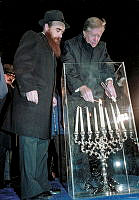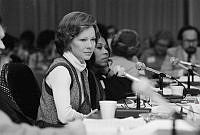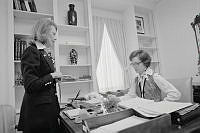Eleanor Roosevelt's "My Day": Family Life
Copyright © White House Historical Association. All rights reserved under international copyright conventions. No part of this article may be reproduced or utilized in any form or by any means, electronic or mechanical, including photocopying, recording, or by any information storage and retrieval system, without permission in writing from the publisher. Requests for reprint permissions should be addressed to books@whha.org
Family life in the Roosevelt White House was lively and often hectic. In 1933, when FDR and Eleanor Roosevelt (ER) moved into the White House, the two youngest Roosevelt sons, Franklin, Jr. (1914-1988) and John (1916-1981) were still in college. The three eldest children Anna, (1906-1975) James (1907-1991) and Elliott (1910-1990) were married and had started families of their own. (A sixth child, the first Franklin, Jr. died in infancy.) Whatever their life circumstances, however, the Roosevelt children made the White House their home. Anna, the Roosevelts' only daughter, actually lived in the White House twice during the twelve years the family occupied the house, once in 1933-1934 with her children Anna Eleanor ("Sistie") and Curtis ("Buzz" or "Buzzie") while separated from her first husband, Curtis Dall, and again in 1944, when following the death of FDR's longtime secretary Missy LeHand, she returned to the White House to serve as her father's aide, confidante and companion. James, the Roosevelts' oldest son, and his family spent considerable time in the White House particularly during the two years (1936-1938) when he served as an assistant to FDR. Elliott, who lived and worked in Texas during this period, visited only sporadically. Franklin Jr. and John also visited briefly while in college and after they married in 1937 and 1938 respectively.
Their activities and those of the Roosevelts' first thirteen grandchildren filled many of ER's White House columns. (Another ten grandchildren were born after FDR's death in 1945, and four more were adopted).

President Franklin D. Roosevelt and First Lady Eleanor Roosevelt with their thirteen grandchildren on the President's fourth inauguration.
Franklin D. Roosevelt Presidential Library and Museum/NARAFor example, she described the confusion her "children," caused among the guests at the 1937 diplomatic reception when they lined up behind FDR and ER as the first couple greeted guests. On a more somber note, a 1939 column contains an account of Franklin, Jr.'s car accident complete with his 5:30 a.m. call to tell her that he and his wife, Ethel, had "cracked up" and ER's subsequent trip to Winchester, Virginia to pick them up and bring them back to the White House to recover.
A 1937 column recounted the early morning escapade of Elliott's daughter, three-year-old Chandler, who "walked out to explore the world by herself" and ended up in the White House basement where the night watchman found her. "He took her to the third floor, knocked on the first door he came to" and said to the nurse who answered it, "'Does this belong to you?'" In 1939, ER described another young grandchild, Franklin, III, Franklin, Jr.'s son, who after accompanying her on "visits" to FDR "and anyone else who might be in the house" sat on her lap and "solemnly ‘listened'" while ER met with Mrs. Nesbitt, the White House housekeeper. In 1944, another unnamed grandson interrupted ER's scheduled meetings with disabled veterans representatives and the Prime Minister of New Zealand and his wife to parade through her room with a black dog and "a flag twice as big as himself." As ER noted, "It was evidently meant to be a very solemn occasion, so we all waited for the procession to pass."
Once World War II got under way and all four of her sons went into the military, ER expressed her concern for their safety, her joy at the prospect of even a brief reunion with any one of them and her hope that they and other veterans would be able to resume their civilian lives when peace returned.
Besides children and grandchildren, several other longtime aides and friends also lived in the White House during the Roosevelt years. For example, FDR's principal strategist and trusted adviser, Louis Howe, lived in the White House from 1933 until his death in 1936 as did FDR's secretary Missy LeHand who stayed until she suffered a stroke in 1941. ER's longtime friend, the journalist Lorena Hickok, also lived in the White House during FDR's first term. FDR's closest wartime advisor, Harry Hopkins and his young daughter, Diana, moved into the White House in 1940. The Hopkinses were so close to the Roosevelts that FDR served as best man when Hopkins remarried in 1942 and the wedding itself was held in the White House. Before that however, ER became Diana's guardian in case her father, who suffered from a chronic digestive disease, died or was incapacitated.
Rounding out the family circle was a small menagerie of animals who lived at the White House during the Roosevelts' tenure there. For example, when Anna's family (she married journalist John Boettiger in 1935) moved to Seattle, she temporarily left her Irish Setters, Jack and Jill, with ER at the White House. Similarly, Franklin, Jr. dropped his Great Dane off at the White House during the Christmas season of 1937, prompting ER to write in a column, "I find that grandparents are very useful, not only to take over children when their parents feel the need of a change, but to give a home to the dogs which may be temporarily homeless."
The most famous of all the Roosevelts' pets was FDR's Scottie, Fala, who came into the family—and ER's column—in 1940, courtesy of the president's cousin Margaret Suckley. Fala's popularity soared during the 1944 presidential campaign when FDR refuted a Republican charge that he had sent a destroyer to pick up the dog, accidentally left behind on a presidential trip to the Aleutian Islands. "These Republican leaders have not been content with attacks on me, or my wife, or on my sons," FDR told an audience of labor leaders on September 23. ". . .they now include my little dog, Fala. . . . I don't resent attacks, and my family doesn't resent attacks but Fala does. . . . as soon as he learned that the Republican fiction writers in Congress had concocted a story that I left him behind . . . and sent a destroyer back to find him—at a cost to the taxpayers of two or three or eight or twenty million dollars—his Scotch soul was furious. He has not been the same dog since."













